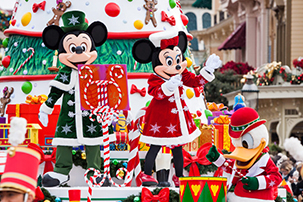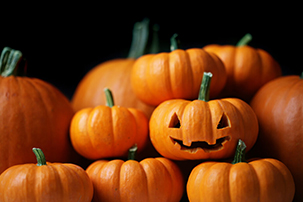Have you heard of flocked artificial Christmas trees but have no idea how they’re made? Ever wonder if there was a magical fairy dusting them with perfect, soft snowflakes? Well, this blog post is here to let you in on one of the best-kept secrets of the holiday season – the process behind making flocked artificial Christmas trees!
Introduction to Flocked Artificial Trees
Flocked artificial trees are a popular choice for those looking to bring the beauty of Christmas to their home without the hassle of a real pine tree. While flocking can be done on real trees as well, fake trees come pre-flocked and ready to decorate. But how are these snow-covered, perfect holiday trees made?
The process begins with an artificial plastic tree that is shaped with several layers of terylene and crushed paper imitating the appearance of actual pine needles. The next step is referred to as “flocking” where fine particles of diluted white glue are sprayed on the branches, coating them in a thin layer of snowy powder. This powder gives it the wintery look that’s highly sought after during this time of year.
The flocking process can also be done manually but often times air compressors are used for this purpose. Air pressures, nozzle sizes, tank angle inflow and outflow openings all play an important role in achieving that perfect white flocked effect consumer’s desire. Once complete, fake trees now come in varying colors including white and multicolored options giving buyers more choice than ever before when it comes to holiday décor.
What Is Flocking?
Flocking, also known as flecking, is a process of applying small fibers to a surface to achieve textures resembling fur, velvet and more. It’s usually made of ground plastic particles, but in the past it was applied with animal or synthetic fibers. In the case of artificial Christmas trees, the plastic particles are electrostatically charged and then sprayed into an evergreen tree shape like a snowstorm. The process creates a “snowy” look on your Christmas tree that resembles the real thing!
The electrostatic flocking process begins by spraying large particles onto the branches and trunk of an artificial Christmas tree. As these larger pieces adhere to the tree, smaller accompanying flocking gets caught in the crevices between branches. During this second phase of flocking smaller pieces fall away as they reach their final destination and coverage is evened out.
The finishing coat sets quickly and holds fast because it combines electrostatically charged fine particles with resins that are aerosolized on contact with surfaces being flocked in order to guarantee adhesive properties. Once dried, presents can be arranged on trees without fear of ruining your beautiful display right away—the durable finish can last up to five years without major signs of wear and tear!
Materials Used to Make Flocked Artificial Trees
When it comes to making flocked artificial Christmas trees, the materials and techniques used are important for providing an authentic look. Generally speaking, a type of plastic is used as the base material for these trees as it is lightweight, durable and economical. The most common types of plastic used are PVC, polyester or PETG (polyethylene terephthalate glycol-modified).
From there, various synthetic materials are used turn this basic frame into a realistic replica of a natural tree.
The main areas where artificial trees differ in their appearance from natural trees are in the trunk, branches and foliage. For the trunk and branches, these parts can be made with different types of foam – either a soft-foam material known as “white foam” or stiffer foam called “EPS” (expanded polystyrene). Branches can also be made with mathematical modeling tools such as CAD (Computer Aided Design) or 3D printing to create more realistic appearances.
For the foliage – which can make up to 50 percent of the raw material weight – there are three main types commonly used: PVC needles, PE needles and PE+PVC blends. Depending on the desired color and texture of the tree, needles come with either pointed ends like natural pine needles or flat ends that mimic fir needle tips. Finally, once all components have been twisted together using varying levels of tension for correct shape, flocking may be applied to give a snow-covered effect. Flocking is generally made from suede paper pulp, but fibers such as silk may also be added for more realism.
Manufacturing Process of Flocked Artificial Trees
The process of making flocked artificial trees begins with manufacturers forming the basic shapes of the tree branches. This is typically accomplished in a high-speed punch press machine or CNC router, which uses programmed computer instructions to create very intricate patterns from plastic sheets.
After the tree shape has been formed, it is painted in an array of colors and textures that simulate the look and feel of a real evergreen tree.
The next step is to apply a coat of flocking material that replicates natural snowfall for winter scenes. The resin-coated nylon particles are either sprayed or dusted onto the surface of the artificial Christmas tree using specialized equipment like an airbrush or electrostatic charge applicator. Additional coats may be applied to increase flocking density if so desired by consumers.
The last step involves adding any decorations desired by customers including decorative stands, pre-attached lights, ornaments and other winter items. Once complete, the trees are shipped off and ready for purchase by consumers worldwide in large box stores or online retailers alike.
Advantages of Flocked Artificial Trees
Flock is a mixture of polyvinyl acetate and polyvinyl chloride that is sprayed on the tree’s branches to achieve the general aesthetic of a winter or snowy scene. Flock allows an artificial Christmas tree to look like it has a natural layer of snow. Not only modern, but flocked trees come with many advantages as well.
The primary benefit of having a flocked Christmas tree is its hassle-free setup and tear down process. Since the flocking material has already been applied to the tree’s branches, it lightens both time and effort when you’re setting up for the holiday season. All you have to do is set up the stand, assemble your tree sections and give each branch an occasional shake for an authentic winter look. This also makes post-Christmas cleanup straightforward and fast as well.
In addition, higher-quality flocked artificial trees come with an included led light system that helps illuminate multiple high-points of interest at once from one location in your living room where you place it next to your couch or wall. This can add during family gatherings or winter holidays warm atmosphere during festive occasions throughout this cold season so everyone can admire your decorations in awe for added ambiance purposes next time you are expecting guests over for seasonal festivities in style without any effort required!
Disadvantages of Flocked Artificial Trees
Although purchasing a flocked artificial tree can be practical for many reasons, there are still some unfortunate drawbacks. For example, since the trees have already gone through their processing and flocking stage, they cannot be customized with additional decorations or special effects. Additionally, these types of trees are also not as easily storable and may take up more space. Further, the brief lifespan of flocked artificial trees (usually 1-2 years) makes them a rather short-term investment compared to traditional types that can last decades. Additionally, the synthetic snow and toxic chemicals used in making these trees could pose some health risks in certain situations.
When considering a flocked artificial tree there are some important things to consider and understand before making a decision:
- Customization capabilities
- Storage options
- Lifespan
- Health risks
Care and Maintenance of Flocked Artificial Trees
Once you’ve purchased and decorated your flocked artificial tree, it’s important to understand the care and maintenance of the tree to ensure it looks beautiful year after year. Proper storage, dusting, cleaning and some basic re-flocking will keep your artificial tree looking as new as ever.
- Storage: For long-term storage or when moving the tree, remove all lights and decorations and carefully dismantle any hinged branches. Store in a dry dust-free area; a closet or attic works well. When transporting, wrap tightly with plastic to prevent dust accumulation or damage while traveling.
- Dusting: Dusting is a necessary part of regular care for artificial trees. Regularly dusting the needles helps prevent dirt accumulation that can lead to abrasion or premature wear. Use a microfiber cloth dampened with warm water and mild dishwashing liquid. Gently wipe down each branch, wiping away any collected grime in the process. Allow sufficient time for the tree to dry before plugging in lights again for decorating purposes.
- Cleaning: For more thorough cleaning you may choose to use specially formulated cleaners made for use on flocked artificial trees, though these are not always necessary depending on how often you clean the tree. If further detail is needed, use a soft bristled brush to scrub stubborn spots on flocked areas followed by wiping gently with soft cloths dampened with warm water/mild dishwashing liquid solution mentioned above for dusting process – being sure not to allow standing water on stems as portions may become exposed when needles drop off.
- Re-flocking: A light layer of flock must be maintained over the needles at all times because this keeps needles from fraying which happens eventually due to normal seasonal drying out cycles along with usage over time. You can add flock by gently misting some onto hard surfaced areas lightly—keep in mind that airborne flock will settle only onto hard surfaces such as plastic and metal stems thus leaving non-flocked softer material such as burlap alone (for example – ribbon loops around branches). This method of re-flocking allows fibers gravitate towards each other thus staying full without appearing clumped together; however be sure not exceed moderate flocking until desired look is achieved taking care that it does not appear too thick on branch stems without adequate watering during Summer months dries out underlying foam considerably reducing fullness – hence repeating motion periodically throughout season is highly recommended.
Conclusion
The process of making flocked artificial trees is a complicated one that requires technicians, machines and hands. From the selection of the correct materials to the time consuming manual flocking, these artisan-crafted trees are built with attention to detail and quality. Flocking adds texture, depth and realism to any artificial tree, creating beautiful pieces that are sure to turn heads when displayed in your home or office.
Many retailers offer these attractive trees in a variety of sizes and shapes – from classic spruce shapes to contemporary designs – each meticulously crafted for maximum beauty and durability. Whether you’re looking for something rustic or modern, there’s a flocked artificial tree perfect for your home:






